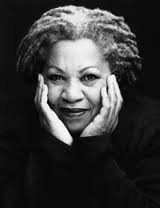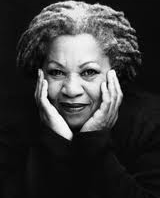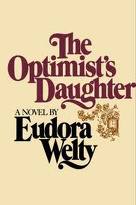I recently read an article in the online Commentary magazine that listed the top-ranked writers in American literature over the past twenty-five years. Here’s a link to the original piece: http://www.commentarymagazine.com/2012/03/26/mla-rankings/. The list is compiled based upon scholarship published within the MLA International Biography. While there is no ‘official’ list for the canon of American literature, the works cited within MLA offer a pretty decent picture of the canonical works deemed relevant by literary scholars.
According to the list, Henry James is number one with 3,188 pieces of scholarship devoted to his work. One important caveat: this article was written almost exactly 2 years ago, so it’s possible the list has changed somewhat but probably not significantly. I was surprised James’s location at the top of the list; I had not read any Henry James until reading The Portrait of a Lady while studying abroad in Italy last year. The next three authors were less surprising to me: William Faulkner, followed by T.S. Eliot and then Herman Melville, in that order. The rest of the list includes many of the perennial classics that dominate high school English syllabi, from Hemingway to Whitman, Thoreau, and Steinbeck. The only other name that raised my eyebrows was Saul Bellow, who at 706 reference works and ranked at #23 out of 25, barely makes the list as it is. All of this discussion is to say the following: what constitutes inclusion in the American canon? Does scholarship define reputation?
If a work is able to withstand scrutiny and maintain its relevancy years after its publication, certainly it is a candidate for the canon. The author of the Commentary piece, D.G. Myers, is quick to mention that the list is not meant to be comprehensive. There are other qualifications, although they go undefined. In my opinion, chief among these qualifications is a probing argument that changes readers’ impression of culture and society.
The problem with the second of these two definitions is that they can occasionally be contradictory. Postmodern work in the 1960s, for instance, has not existed long enough to receive the scholarship or study of a Henry James novel, and yet there is no question in my mind that authors such as Norman Mailer deserve consideration as contributors to the canon of American literature. The other side of this coin is authors who wrote during Poe’s years without publicity or recognition. Their noteworthy works might have received greater attention and praise had they had access to the sort of publicity available (largely because of technology) in the past few decades.
I can see why Myers quantifies his list the way he does. Tracking MLA documentation is a hard and fast method for numerically comparing works of literary art, and it offers relatively realistic results (based upon my very un-scientific recollections from middle and high school). I am most intrigued to see how this list will ultimately change in another twenty-five years. Given the changes in ranking that have occurred in the past twenty-five (James overtook Faulkner, Frost dropped 5 spots, Toni Morrison rose nine places), I would imagine that the rankings will look incredibly different.
 Myers attempts to objectify the largely subjective through his research, and despite my occasional disagreements, I applaud his efforts. The flexibility of the American canon has been under debate for years, and his list provides a good starting point for identifying important literary masters regardless of its comprehensive nature. Who else do you think belongs on the list?
Myers attempts to objectify the largely subjective through his research, and despite my occasional disagreements, I applaud his efforts. The flexibility of the American canon has been under debate for years, and his list provides a good starting point for identifying important literary masters regardless of its comprehensive nature. Who else do you think belongs on the list?



 1. A Farewell to Arms, Ernest Hemingway
1. A Farewell to Arms, Ernest Hemingway 2. All the King’s Men, Robert Penn Warren
2. All the King’s Men, Robert Penn Warren 3. The Optimist’s Daughter, Eudora Welty
3. The Optimist’s Daughter, Eudora Welty 4. The Sound and the Fury, William Faulkner
4. The Sound and the Fury, William Faulkner I’m sure most male readers are rolling their eyes at the inclusion of Austen on this list. As a woman, my affinity for Ms. Austen is probably coded into my DNA. Nevertheless, Persuasion is arguably the author’s best and often most under-appreciated work. This novel is darker than her previous books and represents a shift towards Romantic style and sensibilities. Austen is a master of dialogue and character development. If you can’t stand the love story, at least read and admire Austen for her wit, writing, and satire.
I’m sure most male readers are rolling their eyes at the inclusion of Austen on this list. As a woman, my affinity for Ms. Austen is probably coded into my DNA. Nevertheless, Persuasion is arguably the author’s best and often most under-appreciated work. This novel is darker than her previous books and represents a shift towards Romantic style and sensibilities. Austen is a master of dialogue and character development. If you can’t stand the love story, at least read and admire Austen for her wit, writing, and satire.